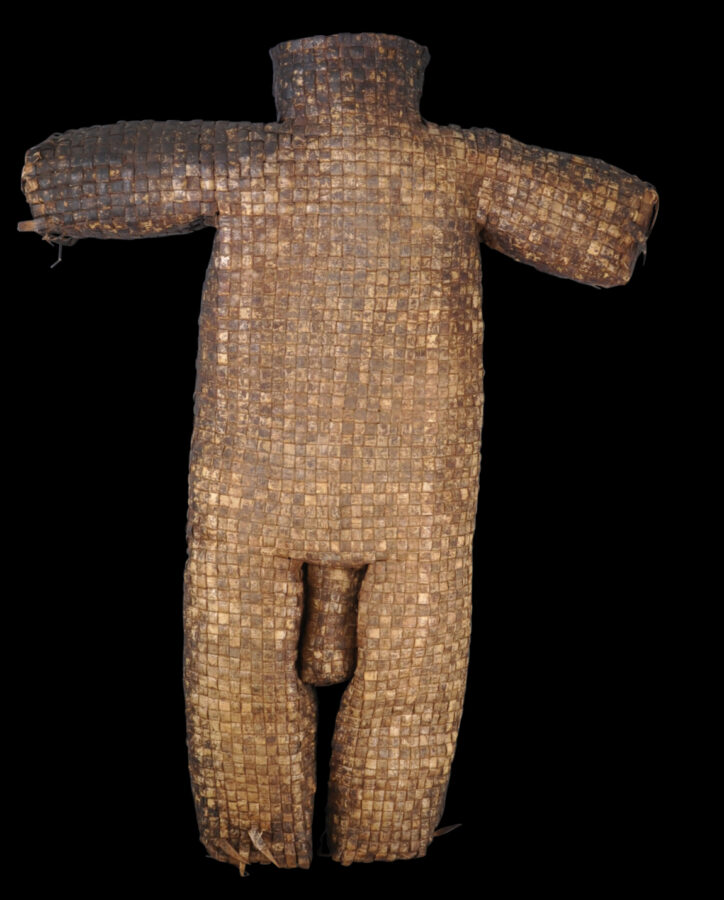This very unusual and highly sculptural basket of woven pandanus leaves is shaped as a headless torso. It is from Sumba island in the Lesser Sunda Islands, east of Java and Bali in Indonesia, and possibly Borneo.
The size of a small child, it is hollow and was used for ceremonial purposes, possibly in connection with rice growing or rice preparation. The ends of the legs and arms are woven closed so that the basket can hold rice for example.
An almost identical but slightly smaller example is illustrated in Indonesian Arts. This too is attributed to early 20th century Sumba.
Traditionally, the people of the Lesser Sunda Islands lived in a world of light and dark, of contrasting elements between male and female, the living and the ancestral – a dual cosmology in which a careful balance of obligations was maintained through a complex and regular pattern of offerings made to the spirits, as well as exchanges between family members, between the living and the dead, and with people of high-born rank. The exchange with the dead was symbiotic: the living helped through rituals the deceased to achieve a good place in the afterlife, and the dead would reciprocate by bestowing prosperity on the living. Harvest and fertility rituals thus were extremely important. These were characterised as ‘white’, whereas mortuary rituals were seen as ‘black’, the two being as important as each other to ensure balance and harmony. Most items associated with ritual offerings had humanoid form, and so it is in this context that the basket here can be seen.
It is in fine condition. It has very obvious age with a dark and varying patina. There is no significant damage and no repairs. The item has great decorative value.
The item is accompanied by a quality, custom-made, black display stand.
References
Indonesian Arts: A Collection of Veky Leo & Melanie Leo Duvern (undated).
Taylor, P.M. & L.V. Aragon, Beyond the Java Sea: Art of Indonesia’s Outer Islands, National Museum of Natural History/Harry N. Abrams, Inc,1991.







